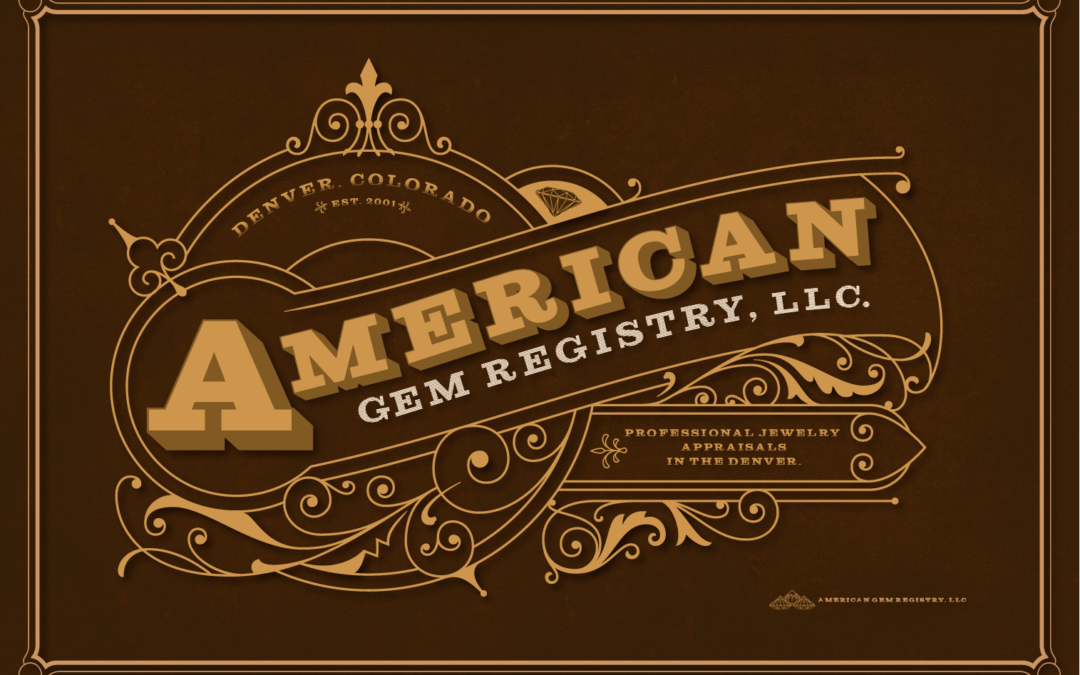The American Gem Registry is owned by an independent jewelry appraiser in Arvada, Colorado. The company has been around since 2011 or so, and even had a website up. Ready to see it?
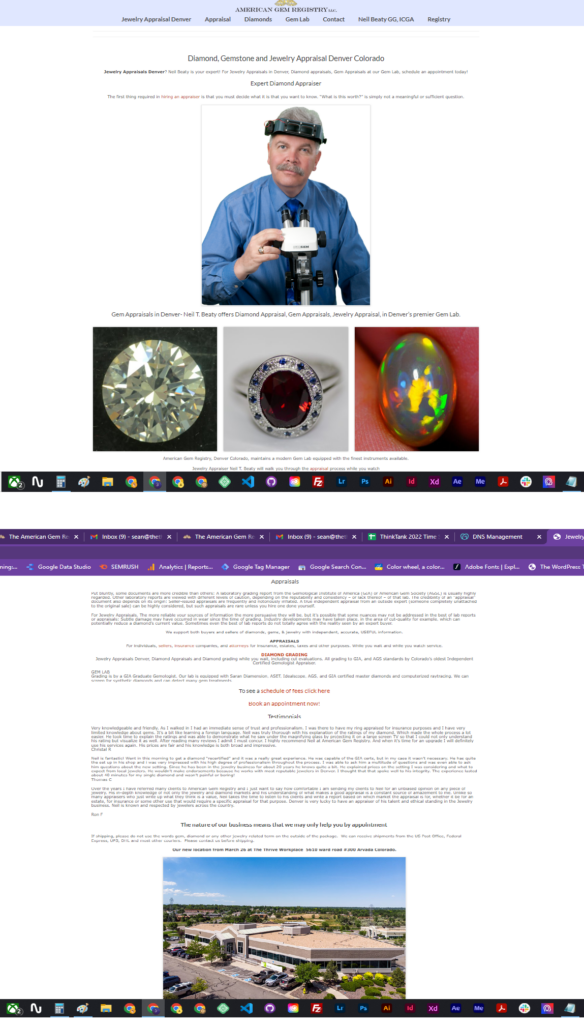
Oh boy! It wasn’t pretty. (Literally.) But even though it wasn’t pretty, the website itself contained a lot of valuable information which needed to be accounted for when making a new website which would also maintain all of that great SEO umph provided by Neil’s excellent information.
This is frequently a common problem—where the quality of the information is masked by it’s less-than-effective visual design—for technical experts.
So this project had “all of the things:” SEO Research and Analysis, into Brand System Design, to Website Design and Development, to task Automation, to Motion Design and development, to ongoing Content Marketing, and in-short, had thinktank design a Command Center so the Client could run their business more effectively, get found on the web, grown, and have a saleable asset.
It worked! Here’s a look at where we’re going, the new American Gem Registry landing page (which you can see live by clicking the picture, or by visiting https://americangemregistry.com:
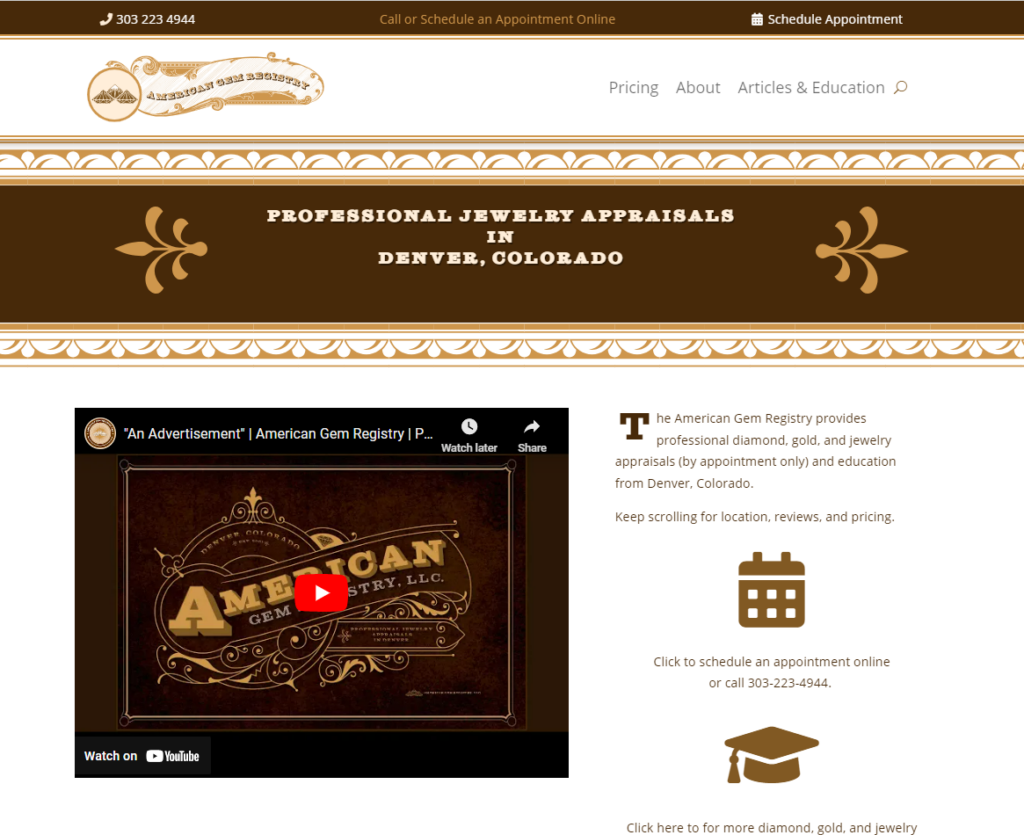
The New Brand System
In the realm of branding, the journey from a single logo to a comprehensive brand identity marks a pivotal first step, encapsulating a business’s visual essence through colors, typography, and imagery. However, the evolution from a brand identity to a brand system represents an equally monumental leap, transforming how a business communicates and operates across all touchpoints.
A brand identity is a subset of a brand system, which includes not only the visual elements but also the strategic application of these elements in marketing materials, digital presence, customer service protocols, and beyond.
For small businesses such as the American Gem Registry, transitioning to a well-organized brand system from merely having a brand identity is crucial. It ensures consistency, fosters brand recognition, and enhances customer experiences. Implementing a brand system significantly amplifies a business’s effectiveness by streamlining communication, reinforcing brand values, and ultimately, driving growth.
The American Gem Registry’s embrace of a full brand system, designed and implemented by ThinkTank, showcases the transformative power of comprehensive branding, setting a new standard for how small businesses can achieve remarkable coherence and impact in their market presence.
The Original Brand


There it was, in a nut-shell! All of the files that the American Gem Registry had from their original designer. This is a common situation with a lot of small businesses who had some initial branding work done at some point in the past, where they have a few logos, exactly in this format.
The first thing to do was to discover what the Client liked about the logo. It was a pretty simple answer, which I think you should be able to pick out, too. Yeah, the logo leaves a lot to be desired, but those mountains like diamonds are BOMB!
This is what you might call “Graphic Design Forensics,” where all you have from a previous designer are a few files that may or may not be the appropriate “vector format.” ThinkTank jumps into the files and separates the desired elements from the undesired.
The result was the American Gem Registry Logo Mark, shown here. After putting the old logo in this format, it opened up a lot of options for further brand design after all of the colors and such were chosen.
The Redesigned Brand
In re-conceptualizing this brand, ThinkTank was inspired by the elegance of 18th century Victorian Advertising, that was the birth place of modern graphic design. How fun would it be to have this style of brand for a Jewelry Appraiser? Oh, speaking from experience, it is so much fun.
So, thinktank used a combination of pre-designed assets by Heritage Type, the old logos from American Gem Registry, fonts from Adobe Fonts, and some good ol’ fashioned gumption to make a whole thing from colors that, hopefully, are reminiscent of “an elegant cigar box.” We chose a rich array of browns and tans for a color theme that really brings the whole thing together.
Full Brand Systems like this yield a ton of brand assets; literally hundreds, if not thousands, of files. (That’s why you need a system in order to organize and reproduce assets and media for a consistent effect.) As you can see, by including elements of the original logo, a sense of visual consistency is also created from old to new.
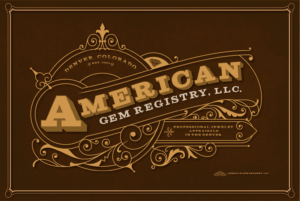

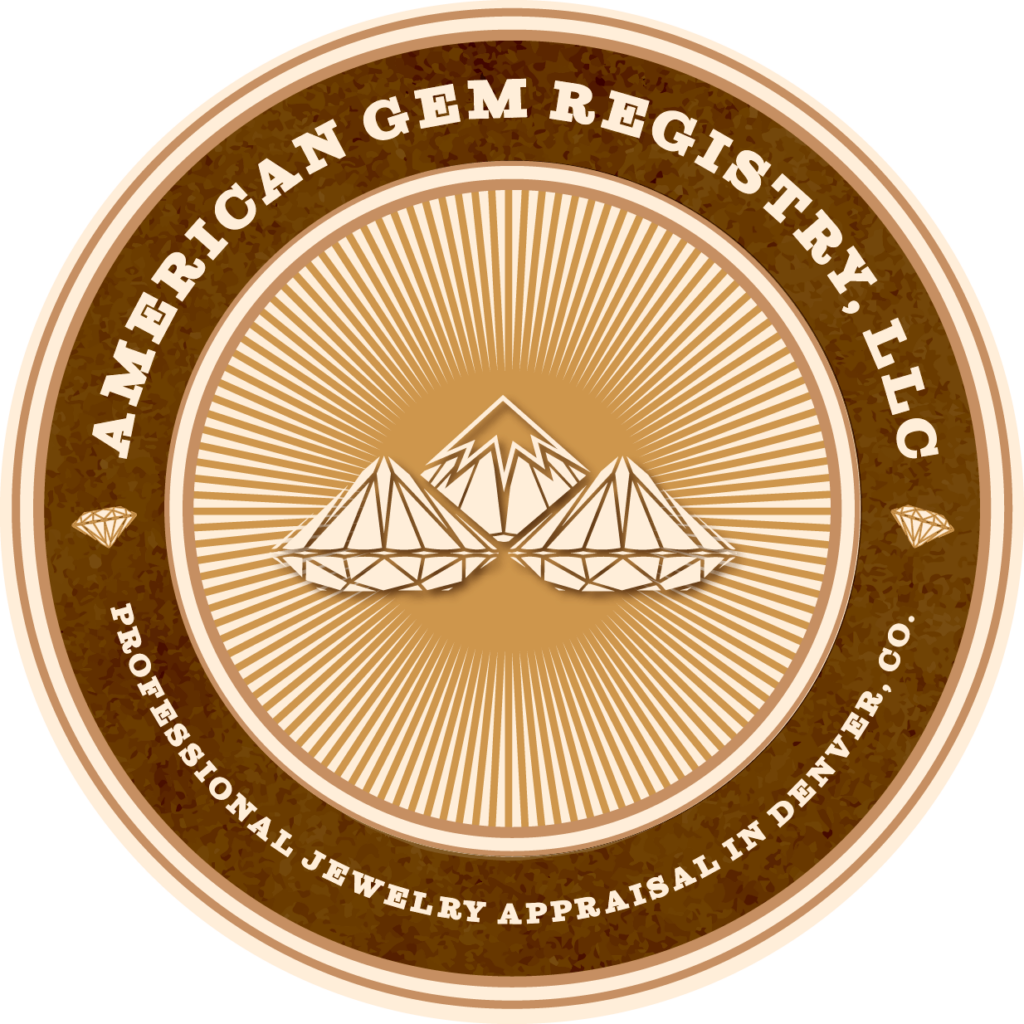
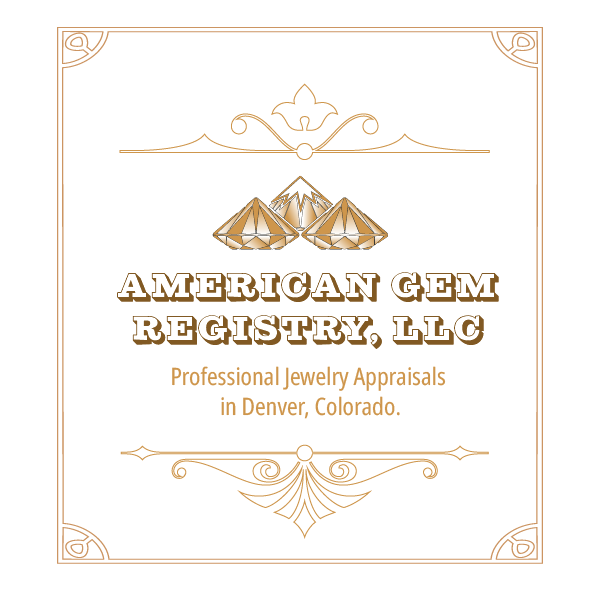
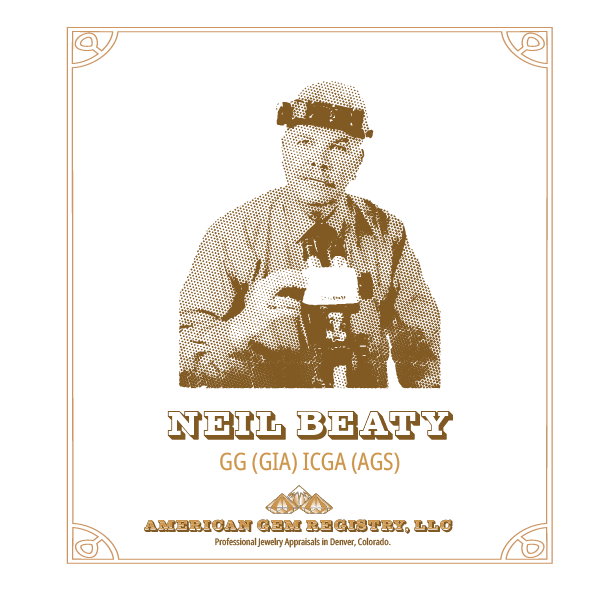
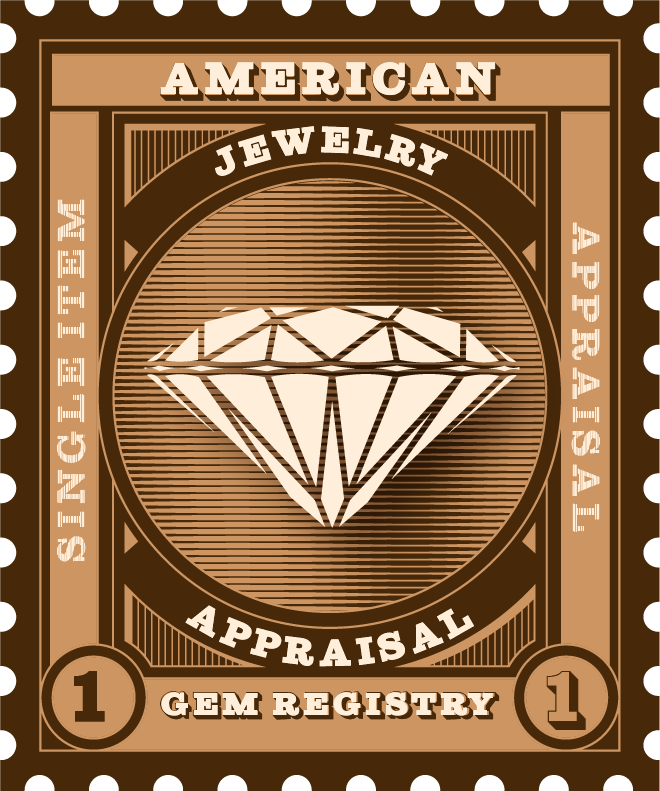

The New Website
The new AGR website serves two functions:
- Acquire local business; and,
- Establish itself as an authority of Gemology.
Get Business in the Door
One of the first purposes of any business is sales. When you’re an expert and you have to actually handle the material in question this means you need local business, people walking in your door.
So, on the one hand, this website targets local key words, like “Jewelry Appraisal Denver” (for which it ranks #1 according to SEM Rush. See for yourself.) This means that, when performing this search, the American Gem Registry is the first organic result, it’s so relevant it’s even appearing above the “people ask” section.
The Cost Per Click of “Jewelry Appraisal Denver” is currently $3.73 per click (sem rush, May 2024). That is how much the American Gem Registry saves every time someone simply visits their site organically from this search term.
Automations and Integrations
The site also does some cool stuff automatically in the background:
- Customers can auto-schedule using Squarespace scheduler. See it live.
- The Auto Scheduler uses Zapier to create an event in the master AGR Google Calendar, AND a creates a new customer in HubSpot.
- HubSpot is the master Customer Resource Management software, and it does all of it’s cool things, like automatically sending a follow-up email that reminds the customer to leave a Google Review.
- The Website automatically collects and displays said Google Reviews.
Automations and integrations are the future of work, and save all sorts of time that adds up.
THE Authority on Jewelry Appraisal: Long Term Authority, Expertise, and Experience
The other purpose this website serves is to become the web authority on jewelry appraisal and to become a saleable asset.
This purpose, and how we accomplished it, turns out to have been way ahead of the recent March ’24 Algorithm Update, which includes a new evaluation on quality. Read all about it here.
The key to the new internet is into creating Trust by demonstrating Experience, Expertise, and Authority—Google’s new EEAT model. (The new “E” is “Experience.”)
Exceptional Organization
One of the keys to making this new web-search paradigm affordable is efficiency. Having a well-designed Brand System to produce branded content as quickly as possible without sacrificing quality is imperative. But after your High Quality Content is produced, it still needs to be optimized and organized for consumption on your website.
WordPress has a native feature called “taxonomies.” These organize information, and act rather like your website’s Table of Contents or Category Index. You can use them in conjunction with a keyword strategy to effectively manage content over the long term, automating several steps.
That sounds complicated. Check out the AGR Blog Page, it says it all.
If you click into an article, you may notice the human-readable URL (which is also very SEO friendly).
Custom Data Driven High Quality Content
To become “THE” authority on a given topic is a national or global strategy that focuses on quality and timely information.
The best way to generate “timely” information is through careful observation of your Website’s Analytics and trends in your keywords.
Before the American Gem Registry would write an article, ThinkTank would provide a list of keywords and trends related to the website—as well as reference long list of articles that might be considered “required information” for a website about gemology.
Foundational Content
An example of the latter is our extensive work with the 4c’s of Gemology. This section provides foundational work for the rest of the website’s content as this is a foundational topic in gemology. (If you’ve bought a diamond ring, you’ve heard of it.) The additional graphics on this section were produced efficiently using the Brand System, and are distributed throughout the site, conserving a great deal of effort over the long term.
Topical Content or Current Events
The best example of this is the article “How to Sell Lab Grown Diamonds in 2023.” Through research, and well in advance of the surge in lab grown diamond buzz that began in 2022, we determined this topic. The American Gem Registry wrote the article. (Of course they wrote the article, no one anywhere is interested in ThinkTank’s opinions about Lab Grown Diamonds.) We optimized and posted it.
This particular article sustained consistent clicks for over a year (see the next section). So, even with minimal fresh posting, this one article helped to establish a presence for long after a lower-quality article may have.
Video
Video is important for both Local and National strategies. It’s an important part about proving to search engines that you have “hands on experience,” and it’s an important part about getting locals to trust you enough to stop by for a visit.
Video is expensive, but a well optimized Brand System builds video as efficiently as anything else within it’s scope. It expedites the production of motion graphics and on-screen graphics—which are the very same graphics made for the in-depth articles from above.
In the next section we’ll show you how much of a bump the site got in traffic simply by providing video. #worthit
Calculating Savings and ROI of a High Quality Strategy
Here we have this exceptional website with all of the bells-and-whistles. What makes it worth it and how do you even calculate this in the first place?
Opportunity Cost of Organics
What we’re looking for is that old staple of Econ 101, Opportunity Cost, or the cost of the next-best alternative. The ready made Opportunity Cost of an Organic Content Strategy is to take the number of clicks you actually generated and multiply it by the Cost Per Click.
Determine Your Clicks
To get the amount of clicks your website generates, you need Google Search Console installed. The below information is from the American Gem Registry’s Search Console from April, 2024. It displays the last year’s worth of data and clicks for the top performing pages.
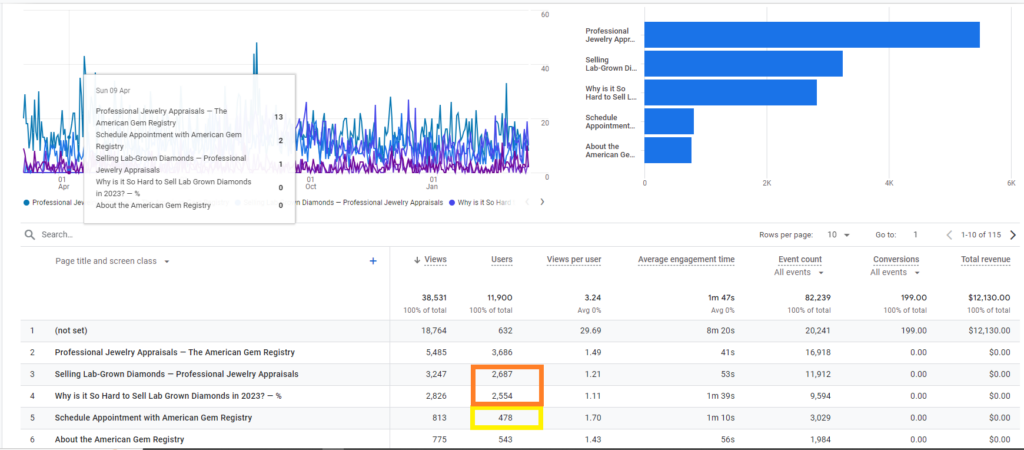
If you check out this image, we’ve highlighted three numbers under the Users column. These were the number of times a unique person clicked into, and engaged with, the URL in question. Remember, this website has two objectives: draw local business and establish national authority.
The numbers highlighted yellow represent the number of people who clicked on “Schedule an Appointment,” and, as will act as a crude estimate of how many people clicked on “jewelry appraisal Denver” and Converted to being customers.
Similarly, the numbers in orange are for articles about related to the keyword “selling lab grown diamonds.”
Find Cost Per Click (CPC)
There are lots of ways to determine CPC, or cost per click. For this example we went and got current pricing information for both of these keywords from SEM Rush:


Specifically, “Sell Lab Grown Diamonds” has a Cost Per Click of $4.50; and “Jewelry Appraisal Denver” a CPC of $3.73. (Both of those prices has gone up significantly in the past year as well.)
Organic Savings: An Estimate of CPC
After this the calculation is simple, though it should be noted this particular example is a bit overly simple, and we’re being conservative; but these numbers are an accurate estimate of saving on paying for clicks.
Opportunity Cost of “Sell Lab Grown Diamonds” Let’s only use one of the article’s clicks above, since multiple people probably visited both articles, and we’re being conservative.
2,687 Clicks x $4.50 Per Click = $12,091.5
Opportunity Cost of “Jewelry Appraisal Denver,” by the number of people who only clicked on “schedule an appointment,” which would also be very conservative.
478 clicks x $3.73 per click = 1,782.94
By this very conservative estimate, the American Gem Registry saved approximately $14,684.44 in 2023 by maintaining an organic strategy instead of buying the same number of clicks. Dang.
Long Term Viability
Another charming aspect of this High Quality Content Strategy is the viability of the content created over time. Content Decay isn’t a well-known term. It’s when a given piece of content becomes outdated. It’s not always negative, but, certainly, a piece of content spammed by AI isn’t likely to have the long-term effect that a well-meaning and researched article will have over time.
The proof is in the pudding:
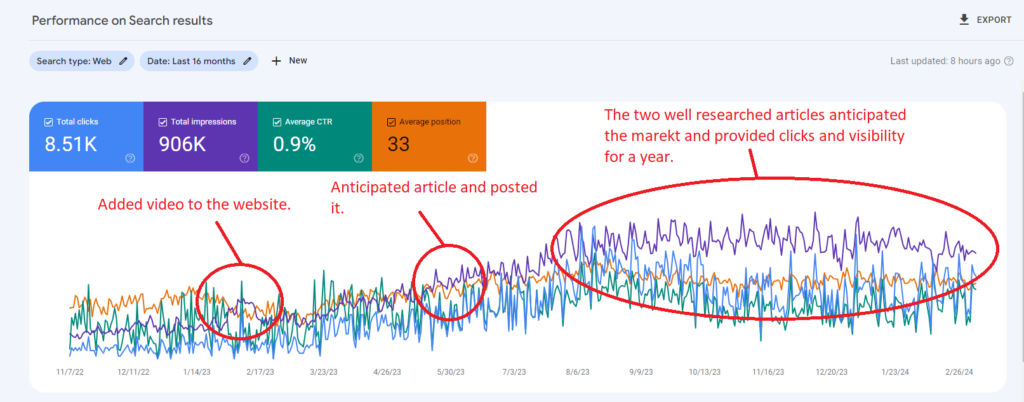
Check out the above data for a sixteen month period with this customer. This image shows three very distinct events.
- The first clear event was a huge (at the time) spike we saw in impressions and clicks when we started adding video to the website.
- During the second phase, while we’re adding video on foundational topics, we also were watching our analytics and the industry closely to anticipate topics that would be valuable to people. You can clearly see on the graph that we not only found a topic, but it was a good one. Check out the way both impressions and clicks go up.
- In this third phase what you’re actually looking at is the High Quality Content doing most of the work. Thanks to life happening, we had to slow down on content production here, but you can see that, even though there is some decay in clicks over time (which is normal and to be expected), you DON’T see the fall-off in interest that is present when Content decays fully.
We clearly see from these results the long-term viability of a High Quality Content Strategy over time.
Conclusions
This client offered us the opportunity to create a long term content strategy and to show our stuff. You can see from this case study that each stage—starting with Search Engine Optimization research and analysis, building a stunning and unique brand, building a well organized and researched website that acts as a central command center for the business, for automating that website, and for creating a long term strategy based on the most immaculate content standards available—we created a long term investment that is already paying dividends.
Thank you for your time!
